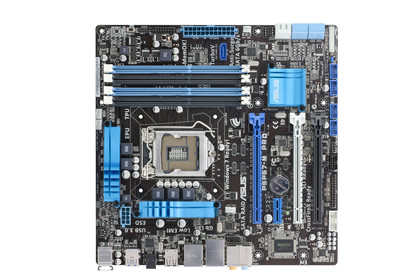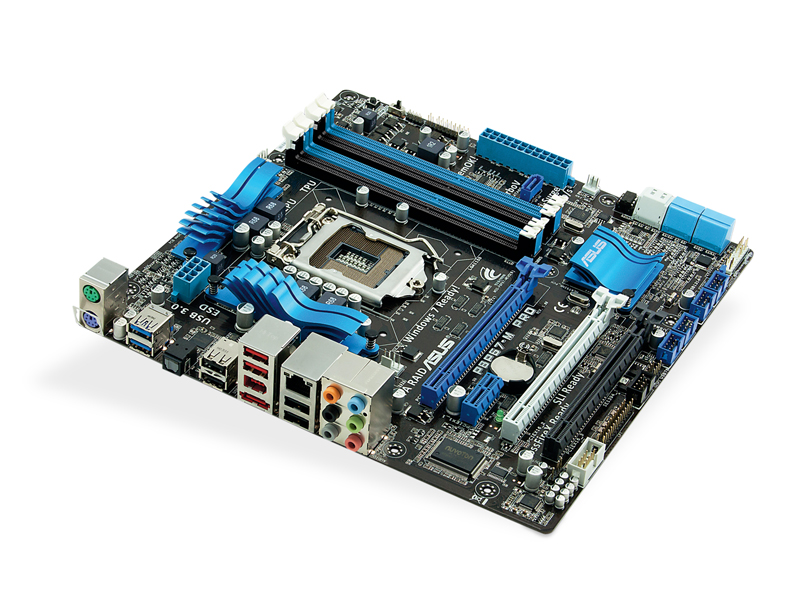Why you can trust TechRadar

Despite that small size, Asus has managed to pack pretty much all the mainstream user requires of a motherboard these days into the P8P67M-Pro; a full complement of DDR3 memory slots, SATA 6Gbps and SATA 3Gbps support, USB 3.0, integrated Gigabit Ethernet and eight-channel audio.
Given the fact that it's built on a small-format PCB, the P8P67M-Pro is very nicely laid out and looks the part too, with a black PCB and pale blue passive heatsinks.
Compared to the huge heatsinks found on some standard-size boards, these are comparatively tiny and are used to cool the P67 and the MOSFETs.
When it comes to the compromises you have to make on a mATX boardd you can clearly see it in the closeness of memory slots to the top of the two PCI-E x16 slots, (x16 in single mode but x8/x8 in Crossfire or SLI mode), but thankfully this isn't the problem it used to be because Asus has used memory slots with only a single locking latch, this being on the other end of the slot.
More of a problem is the positioning of the vertically stacked SATA ports, which can obstruct long graphics cards with massive coolers, but then it's unlikely you would fit such a massive card in the sort of li'l system the P8P67M-Pro is designed to be built around anyway.
The new EFI BIOS Asus is using on its Sandy Bridge boards is something very special, if only in looks alone.
The beauty of having so much traditional motherboard fodder on the CPU now means you can pack much more performance into a small board. Because of this the P8P67M-Pro actually outperforms its chunkier MSI competition, the P67A-GD65.
Both are capable of an impressive 4.2GHz overclock with a 3.4GHz Core i7-2600K, but even at stock speeds the Asus board is just a little faster in our benchmarks.
So the fact is with the new Sandy Bridge setup there's no need for compromise in performance if you opt for a smaller form factor. We could be looking at a new breed of masterful, mini gaming PCs coming our way.
We liked
A well-built, nicely laid-out board that has a feature list that belies its small stature and gives it a good deal of future proofing.
As with most modern Asus motherboards it comes crammed with technology you can't see, including the AI Suite II, which allows you to balance between out and out performance and energy saving via an easy-to-use interface.
The new EFI BIOS is also an eye opener once you get over the shock of seeing it for the first time.
We disliked
There's not much to dislike about the P8P67M-Pro in all honesty, given the comprises that arise as a result of its small format.
